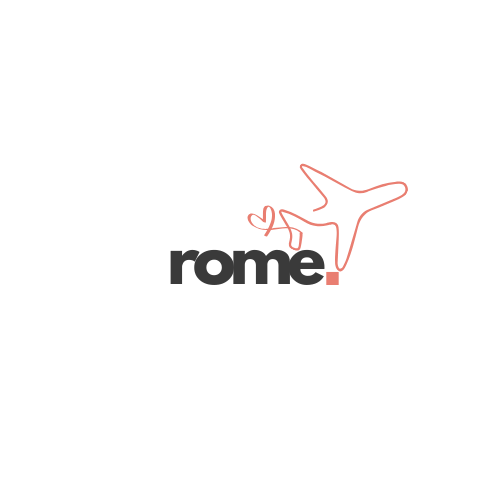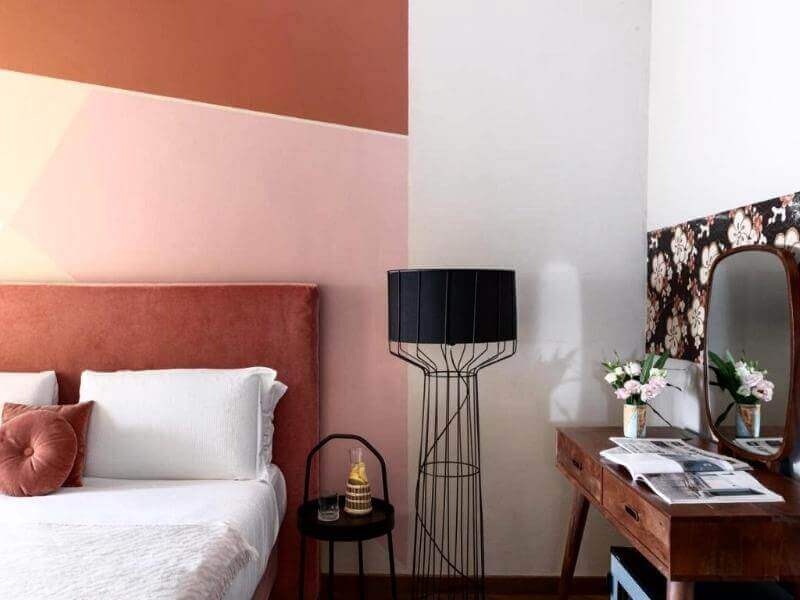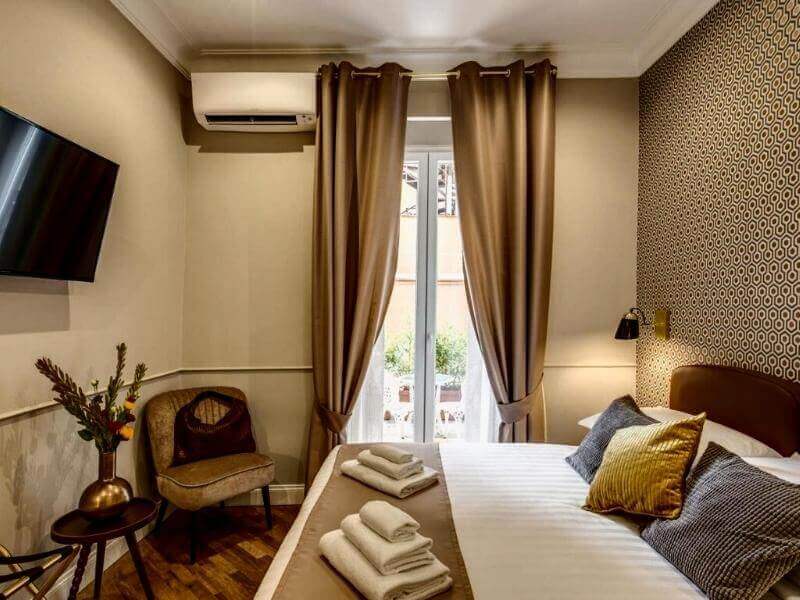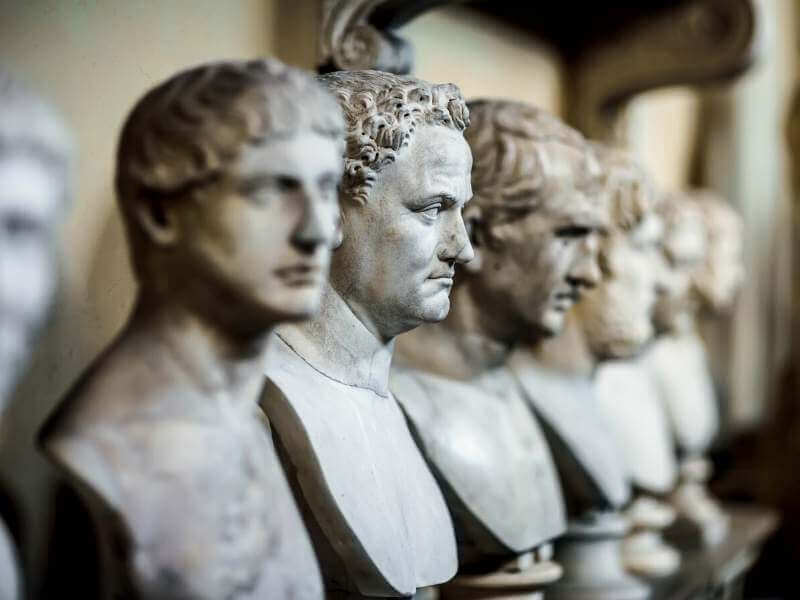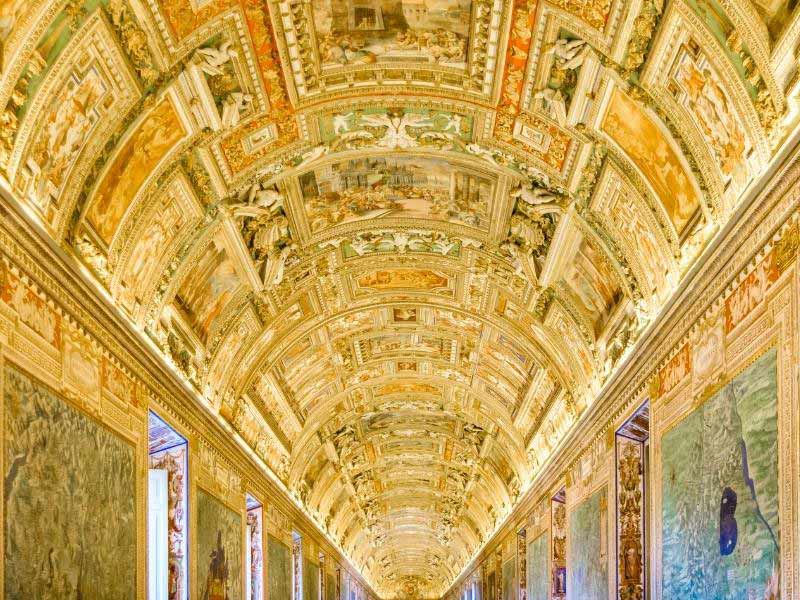Capitoline Museums Rome: Tickets & Visitor Information
Home » Attractions » Capitoline Museums
| DE

- - Updated on
Alongside the Vatican Museums, the Capitoline Museums (“Musei Capitolini”) are among the best museums in Rome.
Spread over three buildings, visitors will find one of the most spectacular antiquity collections. One of the absolute highlights of the art collection is the Capitoline Wolf, a bronze figure from the 6th century BC.
The gigantic statue of Constantine the Great in the museum’s inner courtyard illustrates the incredible dimensions of Roman architecture.
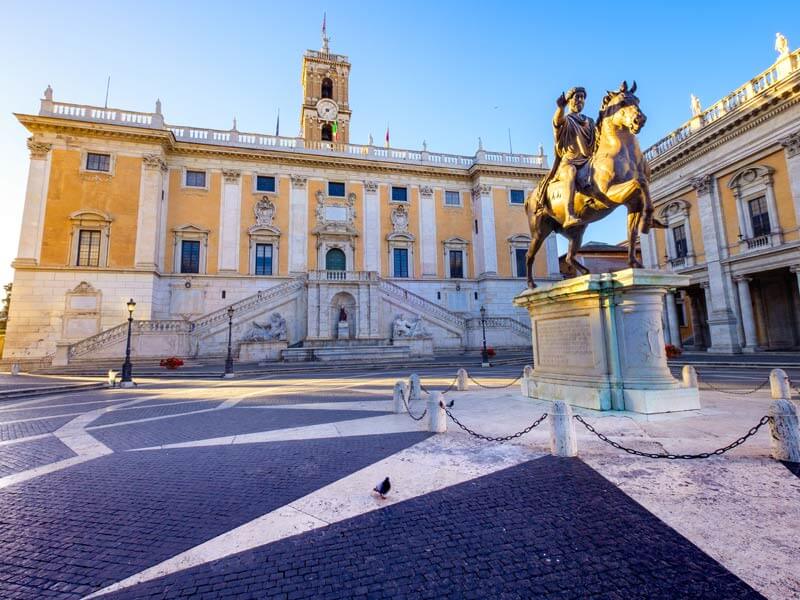
Next to the once 12-meter-high sculpture, even a tall professional basketball player looks like a small chessboard figure! The Capitoline Museums were founded in 1471 when Pope Sixtus IV donated an entire collection of valuable bronze sculptures to the citizens of Rome.
Today, the museum is considered the oldest in the world! This makes the Capitoline Museums one of the most famous attractions in Rome. Incidentally, the museum was crowned one of Europe’s most visited art museums by “The Art Newspaper”!
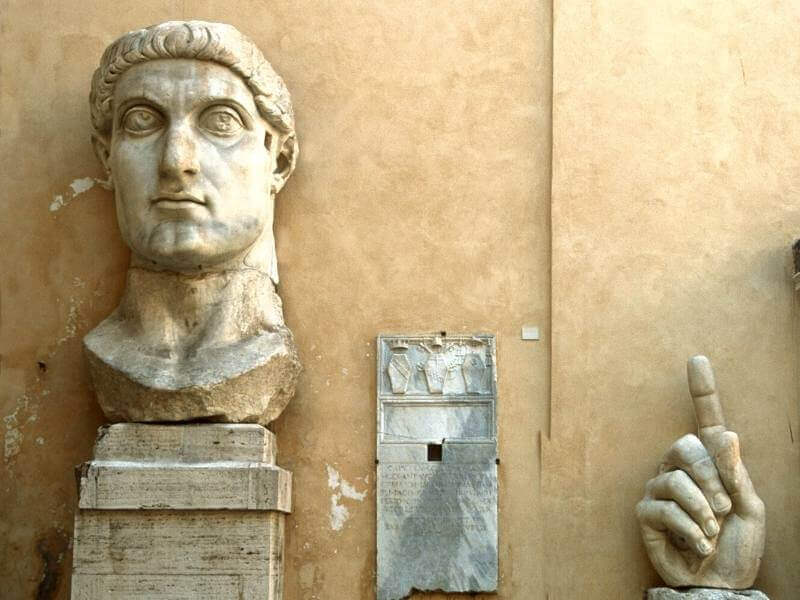
Visitor Information:
Address:
Piazza del Campidoglio 1, 00186 Roma
Transportation:
Bus stop: Piazza Venezia
Buses: 64, 87, 119
Opening hours:
Tuesday – Sunday: 9:30 – 19:30
Monday: closed
Nearby:
Monumento a Vittorio Emanuele II (0,1 km)
Roman Forum (0,3 km)
Colosseum (1,1 km)
Recommended exploration time:
1-2 hours
The History of the Capitoline Museums in Rome
As the oldest museum in the world, the Capitoline Museums have many fascinating art treasures from past eras to offer. But how exactly did the museum come about?
The starting point for today’s tourist magnet was the donation of ancient sculptures by Pope Sixtus IV, who bequeathed a whole series of bronze sculptures to Rome in 1471, exhibited on the Capitoline Hill.
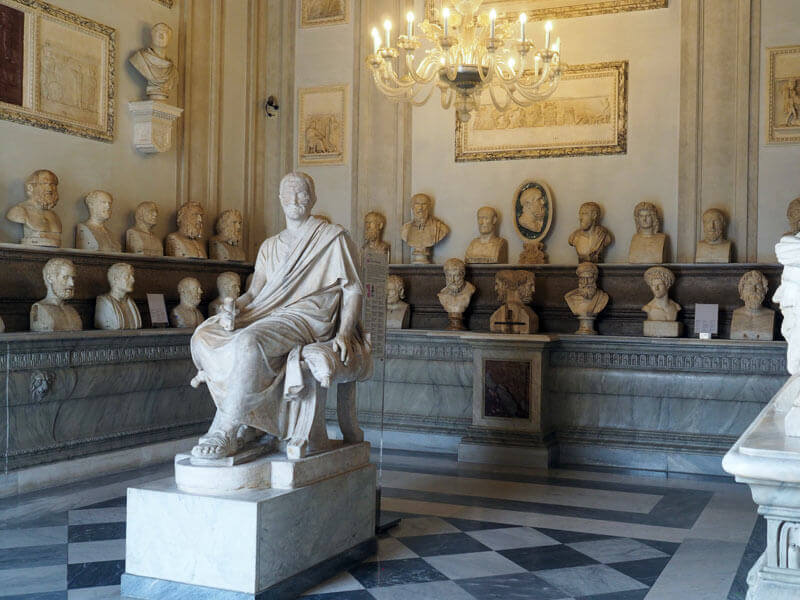
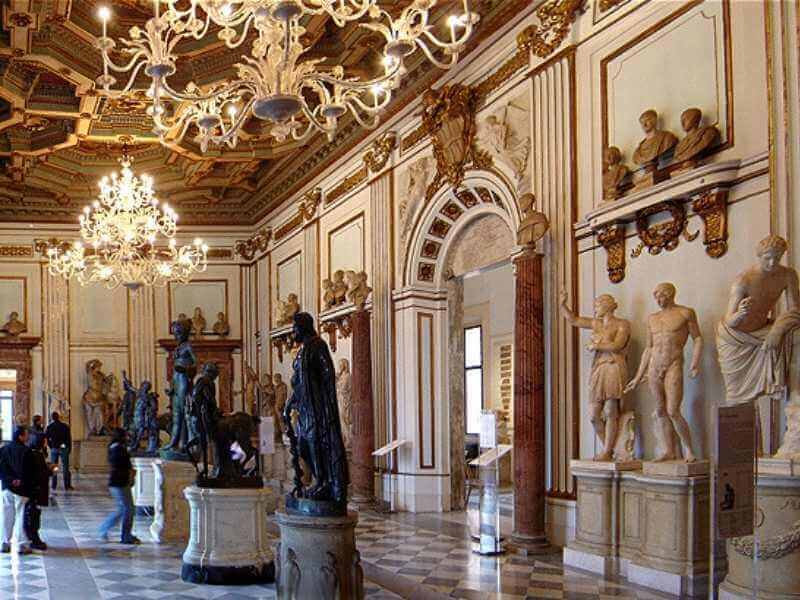
The museum’s collection grew to include many more sculptures, paintings, and mosaics in the following years. Some of these were purchased, while others were bequeathed.
With the construction of the Palazzo Nuova in 1654, the Capitoline Museums were given additional space. Almost one hundred years later, the Capitoline Museums were finally opened in 1734.
Over the years that followed, the museum was repeatedly expanded, restored, and restructured. Therefore, It is no wonder that the Capitoline Museums have catapulted themselves into the hearts of many history-loving visitors. The art museum in the heart of Rome impresses its visitors.
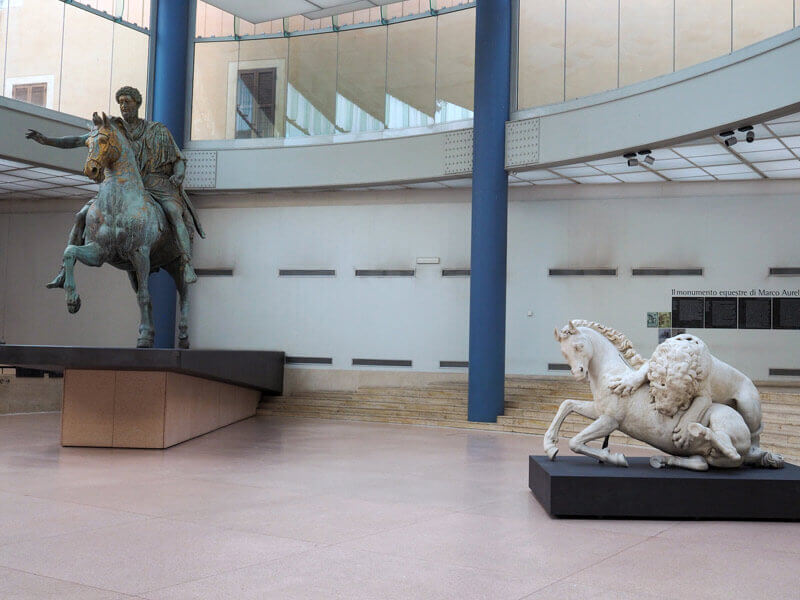
Our hotel recommendations in the center of Rome:
Have you already found a place to stay? We have researched the best hotels nearby! -> Hotels in Rome City Center
Guest reviews: 8.7 (Excellent)
The Palace of the Conservators - Palazzo dei Conservatori:
The most famous works are in the Palazzo dei Conservatori, the Conservators’ Palace. Here you will find the gigantic statue of Constantine the Great and the bronze “lactating she-wolf.” Other outstanding bronze sculptures can be found in the Palazzo Massimo alle Terme.
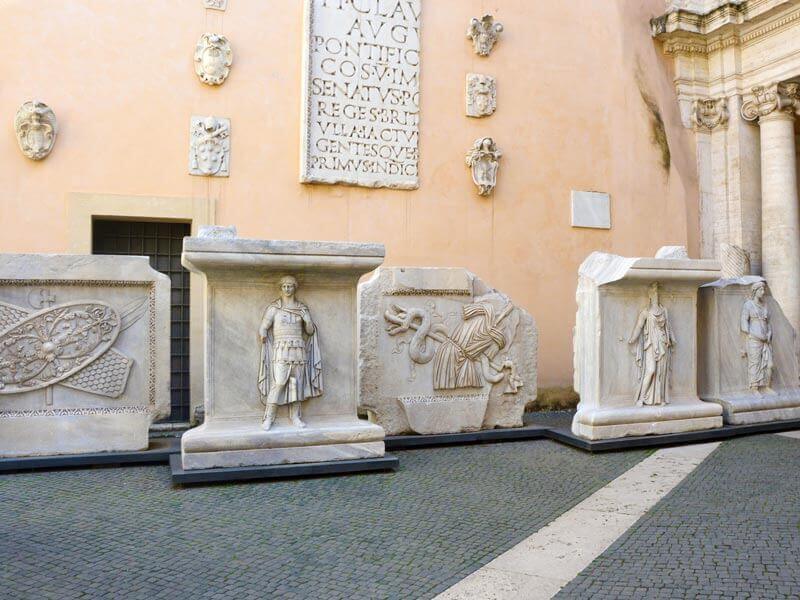
Colossal statue of Constantine the Great
This statue, initially 12 meters high, depicts Emperor Constantine the Great. The marble statue was made at Constantine’s request after his victory in the Battle of the Milvian Bridge around 313.
The statue was seen as a demonstration of the emperor’s power. You can marvel at ten of the remaining fragments in the inner courtyard of the Capitoline Museums.
These include both feet, the head, the hand, and parts of the legs, arms, and chest. These historical sculpture parts were rediscovered in the 15th century.
The Capitoline wolf
The Capitoline she-wolf has been the symbol of Rome since ancient times. The bronze sculpture shows a she-wolf suckling her twins.
Although the age of this sculpture is still disputed, the scene’s meaning is clear. The statue’s symbolism was inspired by the legend of the city’s founding.
The twins of this work of art were only added in the 15th century. The artwork was one of the first donations by Pope Sixtus IV.
Other highlights of this palazzo include the Greek sculpture of the boy “Spinario,” a naked boy pulling a thorn out of his left foot. The thorn extractor was one of the works bequeathed to Rome by Pope Sixtus IV in 1471.
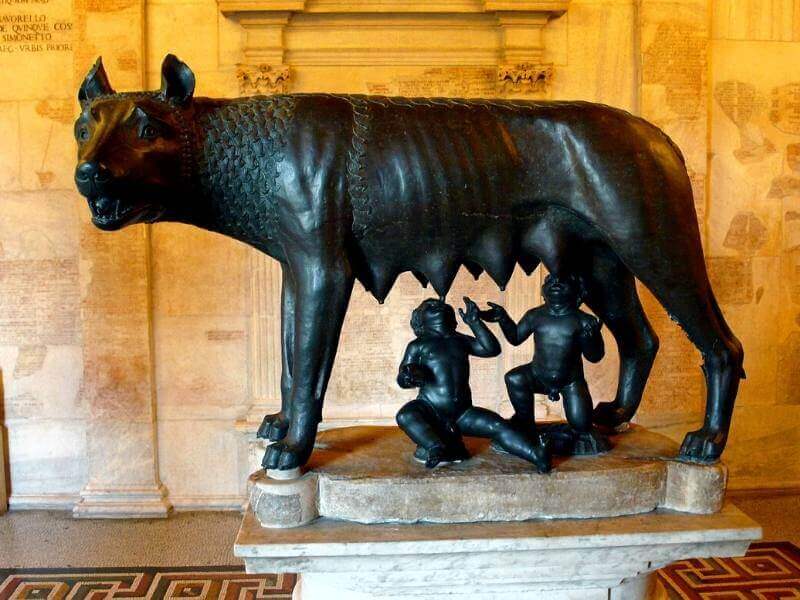
Contrary to initial assumptions, this sculpture is not the original from the 5th century. Instead, the Capitoline thorn puller is today regarded as a classicist stylization.
Other highlights in this palazzo include works by renowned artists such as Caravaggio (John the Baptist), Rubens (Romulus and Remus), Titian, and Tintoretto. These have been housed in a side wing since 1957, built between 1939 and 1941.
Palazzo Nuovo:
On the other hand, the Palazzo Nuova focuses mainly on sculptures, mosaics, and busts from antiquity. One of the most famous figures is the Capitoline Venus, created in the 1st century AD.
The renowned marble figure was found on April 8, 1874, by archaeologist Antonio Nibby during excavations in the Baths of Diocletian.

Another highlight in the palazzo is the Capitoline Discobolus, a wounded warrior statue restored between 1658 and 1733. The statue of the dying Gaul from the 2nd century is a well-known copy of the original from around 220 BC.
It shows a Celt who has been hit, holding his leg in pain and looking down to the ground in a sitting position. The entire dynamic of this sculpture looks remarkably real!
Tabularium & an exciting underground passage:
The fascinating underground tunnel connecting the Palazzo Nuova and the Palazzo dei Conservatori. Directly beneath the Capitoline Hill, an almost mystical connecting shaft awaits you.
A whole series of ancient tombstones are presented here, on which Latin inscriptions can still be seen today. Visitors have a fascinating view of the Roman Forum from the so-called Tabularium, Rome’s old document archive.
The Tabularium was rebuilt in 83 BC after a major fire in Rome and contained essential writings and documents of the city. Above all, legal texts, documents, and much more were kept here.
The ancient building developed into a fortress in the Middle Ages, which years later became the Palazzo Senatorio.
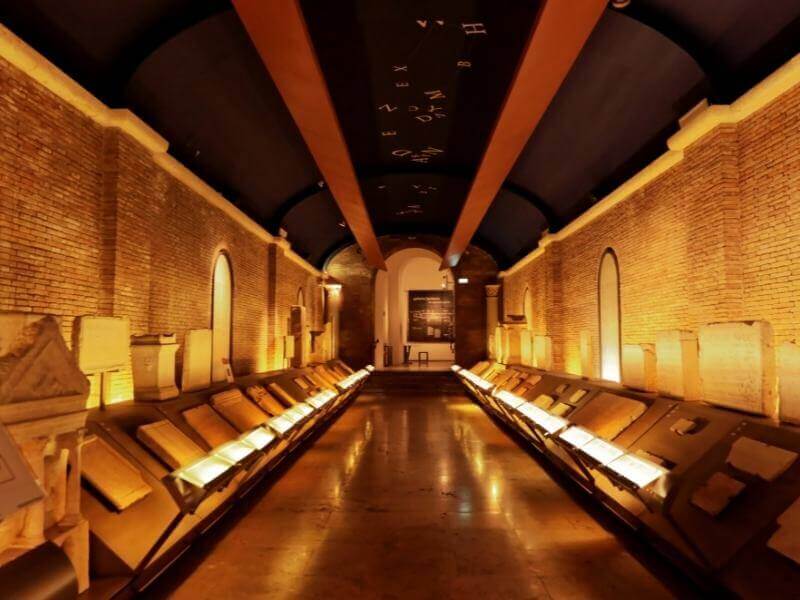
Centrale Montemartini:
Since 2005, the “Centrale Montemartini” has been part of the Capitoline Museums of Rome. This old coal-fired power station is located a little further out on the Via Ostiense and today contains, among other things, the equestrian statue of Marcus Aurelius. Combining ancient marble statues and old machines forms a fascinating symbiosis.
How to get to the Capitoline Museums in Rome:

Editor: Sebastian Erkens
Hey and welcome to Rome-Tourist! My name is Sebastian and I travel regularly to Rome, Italy.
On our Rome blog you will get valuable travel tips. If you have any questions about specific tours or sights, feel free to leave us a comment.
These articles may also interest you:
